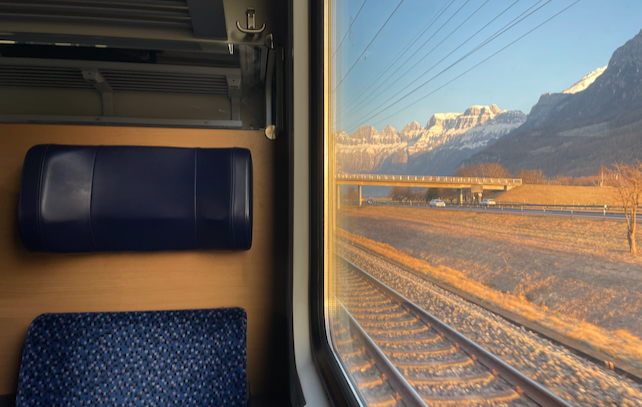
Austria is too far away to reach by train.
Well, that’s what I thought. But then, finally, I actually looked at the timetables – and realised, no it isn’t. Especially if you live in the London area and you’re and heading to one of Austria’s western ski resorts. And by “western ski resort” I don’t mean somewhere obscure. I’m talking about St Anton.
So, finally, 22 years after I first went by train to the French Alps, I boarded a Eurostar at St Pancras, on the first leg of a journey to the Austrian Tirol.
This is what I learnt en route.
1. You can get there in 12 hours, with only two changes
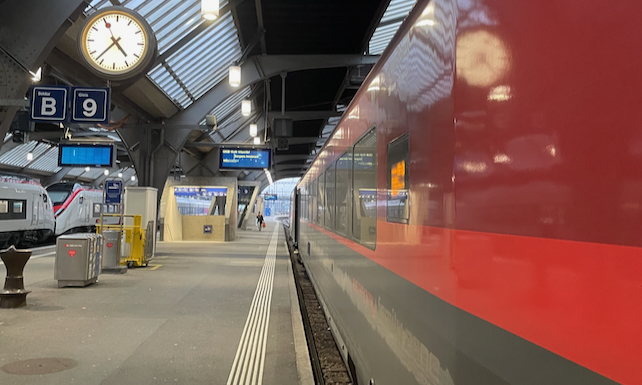
Admittedly, my cab to St Pancras came at 4.30am. But at 6.01am I gliding out of the station on Eurostar. En route, I changed trains at Paris and Zurich, and arrived at St Anton am Arlberg at 7.01pm. Allowing for the time difference, that was a 12 hour rail journey, with plenty of time in Paris and Zurich for the changes.
In fact, you can sometimes find quicker journeys. Looking at Trainline this morning, I’ve found a 10hr 30minute journey with four changes of train.
Either way, it can be done in a day, if you live in the right part of the UK. And it’s not much slower than flying, once you’ve accounted for travel time to the airport, waiting in the departure lounge and getting a transfer to your ski resort.
Why is it so fast? In part, it’s because the route uses France’s brilliant high-speed railway network, from Calais to Paris and then from Paris to Dijon or Strasbourg. At one point on the SNCF’s direct TGV Lyria service to Zurich, we were doing 267km/h. That’s 166mph.
The other reason for the speed is St Anton’s railway station. The resort actually owes its existence to the railway that was opened here in 1883 – and it now sits directly on the main line between Zurich and Innsbruck. This part of the route winds along lakes and up mountain valleys, and isn’t especially fast, but even so, it delivers you to the middle of the resort. Some of the hotels are barey five minutes’ walk from the platforms.
2. In Paris, RER line D makes the change between stations easy
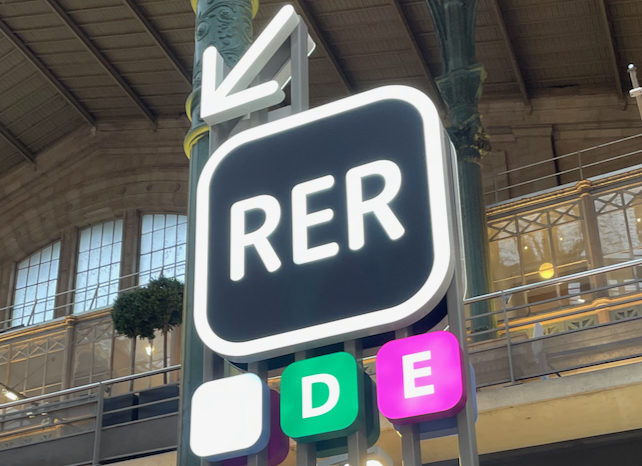
Changing trains is the one significant hassle of rail travel – hauling bags, switching platforms, settling into your new seats with new passengers around you – and generally speaking the fewer times you do it the better. But even so, the change of trains in Paris from the Gare du Nord to the Gare de Lyon is not nearly so daunting as people think.
We have RER line D to thank for that. It’s the Paris equivalent of London’s Crossrail, but with five lines not one (and it was finished in 1999). It’s clearly signposted, and the journey between the two stations, once you’re on board the train, is eight minutes.
The only hassle is buying your ticket – but only if you join the queues that form at the first ticket machines you find. Instead, walk on, following the signs to RER line D and buy your ticket just before the barriers. It’s 100m or so further on, and there’s usually no queue.
It’s much quicker and cheaper than taking a cab.
3. The WiFi on the TGV Lyria is brilliant
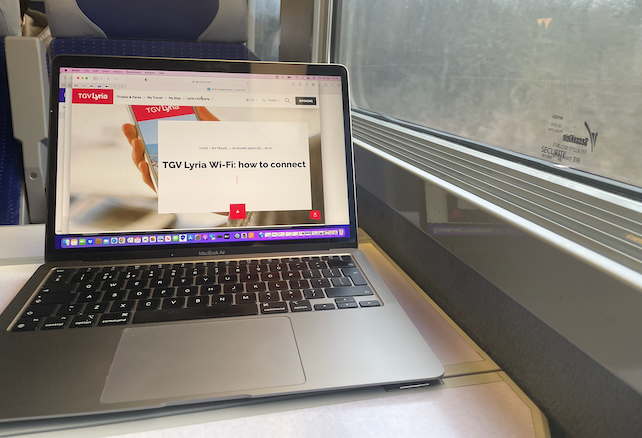
I don’t know how the French have done it – but for a high-speed train TGV Lyria has remarkably reliable wifi. I did some quite internet-intensive work using it en route, and there were none of the usual head-banging moments of frustration you get on trains. My only regret was that I didn’t have access to it for longer.
4. The views in the Alps are mind-blowing
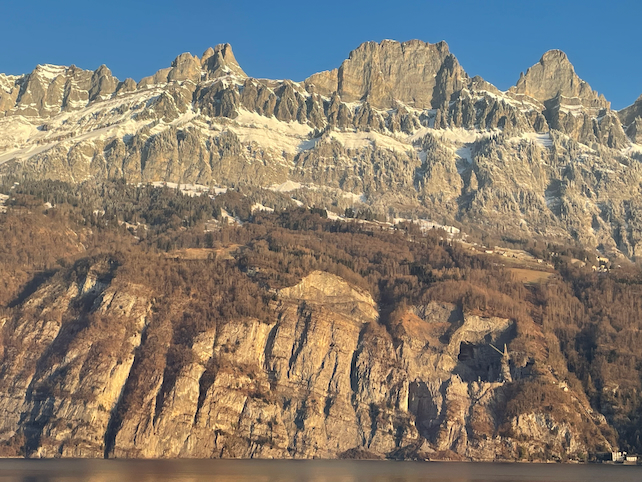
You probably won’t see much of the Alps on the outward leg to St Anton, which in winter you’ll reach after darkness falls. But on the return journey, as day breaks you’ll be glued to the window. This is proper, Hallelujah-Chorus territory.
5. St Anton am Arlberg is waiting at the other end
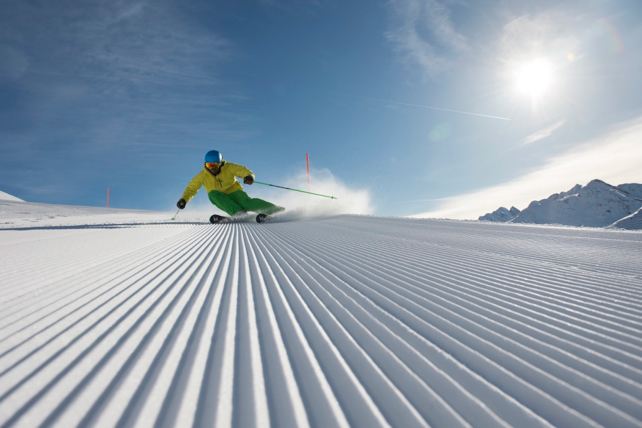
St Anton is one of the greats. Sitting pretty at the eastern end of the Arlberg, it’s plugged into a network of more than 300km of pistes, as well as Austria’s feistiest lift-serviced off-piste skiing, and its most cosmopolitan nightlife. What’s more, at the far end of the lift system you’ll find Warth. In an average winter more snow falls there than in any other Alpine ski village.
Not everyone will love the place. St Anton suits advanced and expert skiers best (as well as night owls), but if fall into either of those categories, you’ll be buzzing as you pull into St Anton’s station at the end of the rail journey. There’s no baggage carousel, no airport transfer and no passport control (the checks are all back in London). You just walk out of the station and there it is. The Alps suddenly seem more accessible, less exotic and more connected to your normal life.
There is one caveat though: when you book your St Anton hotel, make sure it’s near the railway station if you have a 6am train coming home. So you can walk there quickly. If not, book your taxi well ahead. My hotel – Die Albergerin – was lovely – newly-refurbished with bright, airy rooms and good food each night in its wood-panelled restaurant (double rooms start from €119pp, B&B). But it was 25 minutes from the station on foot. The night before I travelled back to London, no St Anton cab company would take a booking for a time earlier than 6am, which is before the (otherwise excellent) bus service starts. In the end, the walk was no bother. But it would have been more of an adventure with, say, 20-30cm of snow on the ground.
6. Best of all, the journey shrinks your carbon footprint
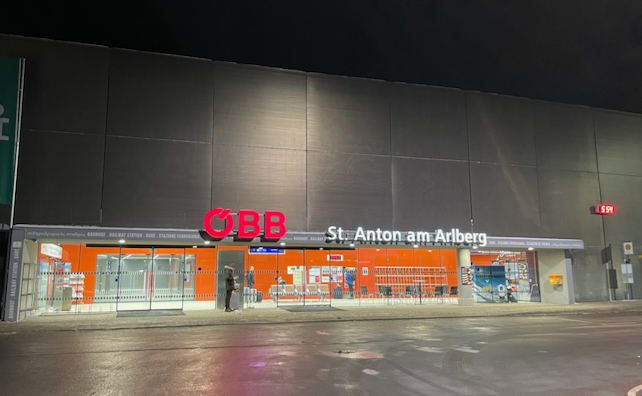
According to research by sustainability specialists Anthesis, on behalf of rail-travel website snowcarbon.co.uk, rail travel to the slopes – as opposed to flights – can reduce the carbon footprint of your travel by up to 60%. Given that more than half the carbon emissions produced by ski resorts are thought to be generated by transport to and around them, that’s significant, So too the fact that all accommodation in the resort is powered by local hydro-electric schemes. In other words, you’re doing a lot more than green-washing your trip.
If only every ski holiday could be like this.
So let’s hope they find a way to make the tickets cheaper

Just like flight prices, the price of train tickets bobbles around all over the place, and that uncertainty is amplified by the different national and international services you have to knit together. So it’s hard to generalise about the cost.
Sometimes, the train can be cheaper. At the time of writing I plucked Wednesday, March 1 out the blue as a date for outbound travel, London to St Anton, and found a one-way ticket for £166.11 on Trainline (most however cost more than £200). Meanwhile, on easyjet.com, flight tickets were almost sold out and exorbitant if not – £336, one way, and that’s excluding your luggage and your transfer to St Anton
But for Tuesday, February 28, the prices were very different. The train was £166.11 and an easyjet flight to Innsbruck £24.99 (excluding the extras).
Given the urgent need for us all to reduce our carbon footprints, we need to find a way to wrestle these rail prices down…
Read more about rail travel to Austria
And here are more tips on making your next ski holiday more sustainable.
Sean Newsom travelled to the Alps and skied in St Anton by train as guest of Visit Tirol and St Anton am Arlberg.


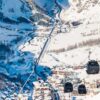












Add Comment